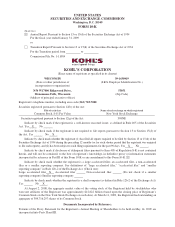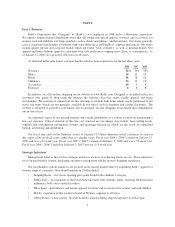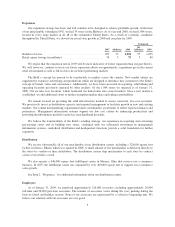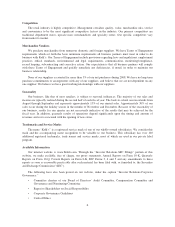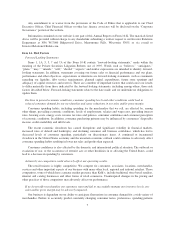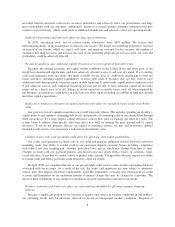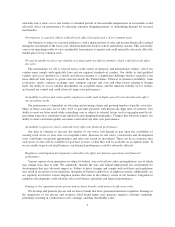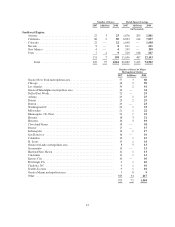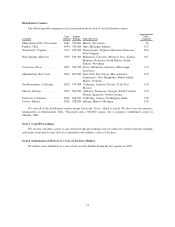Kohl's 2008 Annual Report Download - page 5
Download and view the complete annual report
Please find page 5 of the 2008 Kohl's annual report below. You can navigate through the pages in the report by either clicking on the pages listed below, or by using the keyword search tool below to find specific information within the annual report.
Expansion
Our expansion strategy has been, and will continue to be, designed to achieve profitable growth. At the time
of our initial public offering in 1992, we had 79 stores in the Midwest. As of year-end 2008, we had 1,004 stores,
located in every large market in all 48 of the continental United States. As a result of economic conditions
throughout the United States, we slowed our actual store growth in 2008 and our plans for 2009.
Estimated
2007 Additions 2008
Net
Additions 2009
Number of stores ......................................... 929 75 1,004 55 1,059
Retail square footage (in millions) ............................ 70 5 75 580
We expect that the expansion rate in 2009 will be more indicative of future expansion than our past history.
We will, however, continue to focus our future expansion efforts on opportunistic acquisitions given the current
retail environment as well as fill-in stores in our better performing markets.
The Kohl’s concept has proven to be transferable to markets across the country. New market entries are
supported by extensive advertising and promotions which are designed to introduce new customers to the Kohl’s
concept of brands, value and convenience. Additionally, we have been successful in acquiring, refurbishing and
operating locations previously operated by other retailers. Of the 1,004 stores we operated as of January 31,
2009, 204 are take-over locations, which facilitated our initial entry into several markets. Once a new market is
established, we add additional stores to further strengthen market share and enhance profitability.
We remain focused on providing the solid infrastructure needed to ensure consistent, low-cost execution.
We proactively invest in distribution capacity and regional management to facilitate growth in new and existing
markets. Our central merchandising organization tailors merchandise assortments to reflect regional climates and
preferences. Management information systems support our low cost culture by enhancing productivity and
providing the information needed to make key merchandising decisions.
We believe the transferability of the Kohl’s retailing strategy, our experience in acquiring and converting
pre-existing stores and in building new stores, combined with our substantial investment in management
information systems, centralized distribution and headquarters functions provide a solid foundation for further
expansion.
Distribution
We receive substantially all of our merchandise at ten distribution centers, including a 328,000 square foot
facility in Ottawa, Illinois which was opened in 2008. A small amount of our merchandise is delivered directly to
the stores by vendors or their distributors. The distribution centers ship merchandise to each store by contract
carrier several times a week.
We also operate a 940,000 square foot fulfillment center in Monroe, Ohio that services our e-commerce
business. In 2007, the fulfillment center was expanded by over 400,000 square feet to support our e-commerce
sales growth.
See Item 2, “Properties,” for additional information about our distribution centers.
Employees
As of January 31, 2009, we employed approximately 126,000 associates, including approximately 28,000
full-time and 98,000 part-time associates. The number of associates varies during the year, peaking during the
back-to-school and holiday seasons. None of our associates are represented by a collective bargaining unit. We
believe our relations with our associates are very good.
5

